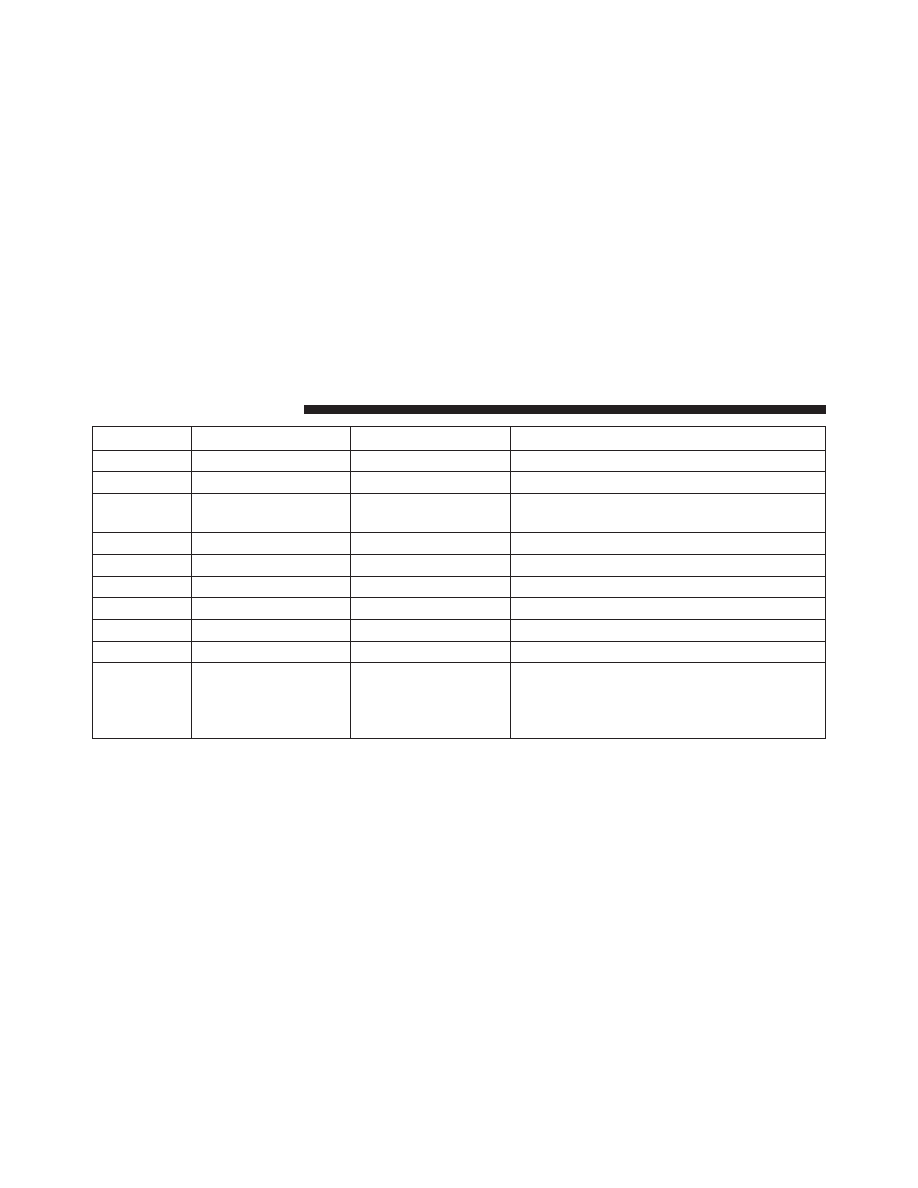RAM Cargo Van (2015 year). Manual - part 39

Cavity
Cartridge Fuse
Mini-Fuse
Description
M25
–
20 Amp Yellow
Fuel Pump, Diesel Lift Pump – If Equipped
M26
–
10 Amp Red
Power Mirror Switch, Driver Window Switch
M27
–
10 Amp Red
Wireless Control Module,
Keyless Entry Module
M28
–
10 Amp Red
Powertrain, Transmission Control Module
M29
–
10 Amp Red
Occupant Classification Module
M30
–
15 Amp Blue
Rear Wiper Module, Power Folding Mirror
M31
–
20 Amp Yellow
Back-Up Lamps
M32
–
10 Amp Red
Airbag Module, THATCHUM – If Equipped
M33
–
10 Amp Red
Powertrain
M34
–
10 Amp Red
Park Assist, Heater Climate Control Module,
Headlamp Wash, Compass, Rear Camera,
Door Lamps, Flashlight, Relay Diesel Cabin
Heater, Rad Fan Diesel – If Equipped
616
MAINTAINING YOUR VEHICLE